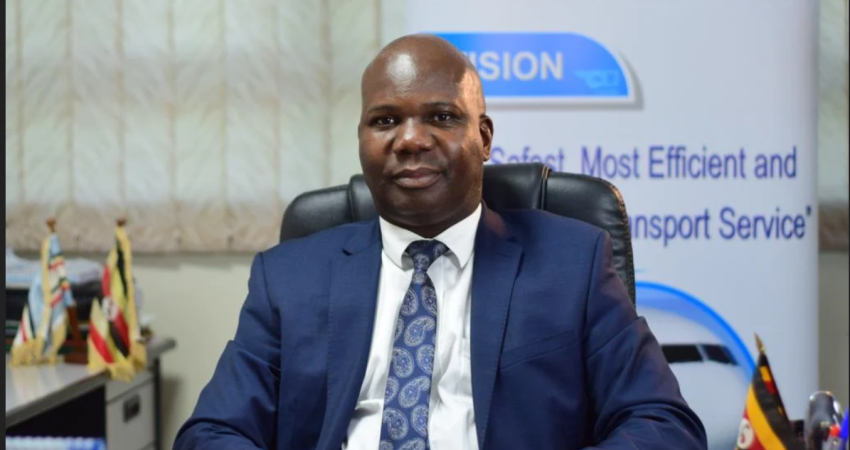
There’s no loss of taxpayers’ money in Entebbe Airport expansion works
What you need to know:
There was only an internal inquiry within Uganda Civil Aviation Authority (UCAA) as one head of department sought clarity, which was satisfactorily given in writing. It is unfortunate that the source of information shared only the inquiry and left out the detailed clarification.
Reference is made to a misleading online and Sunday Monitor article titled “taxpayers lose Shs. 12.8 billion in failed Entebbe Airport worksâ€, which was published on February 19, 2023. For starters, there isn’t any loss or failed project as may have been insinuated
There was only an internal inquiry within Uganda Civil Aviation Authority (UCAA) as one head of department sought clarity, which was satisfactorily given in writing. It is unfortunate that the source of information shared only the inquiry and left out the detailed clarification.
It is not true that ML Tristar, the company undertaking works for the fuel hydrant system, was engaged at an extra cost as they are doing the work at no cost to UCAA yet the agreement provides for income to UCAA as soon as the system becomes operational. Neither did China Communications Construction Company (CCCC) fail to do the work. Instead, it was deemed prudent to effect some changes for the better after careful consideration and widespread stakeholder engagements.
The scoping for the design of the facilities for the upgrade of Entebbe International Airport was done in 2014, way before Tristar came on board. In relation to the scope of works for the fuel hydrant system, CCCC was to construct a hydrant of 700 square meters starting from the existing Apron 1 line to connect to the expanded Apron 1 area of six parking bays. This was a single line with a dead end. It is worth noting that single lines complicate maintenance works. For instance, it is not possible to refuel aircraft while maintenance of the system is being done at the same time. In order to fully optimize, in February 2017, UCAA signed a sub-lease agreement with ML Tristar covering a comprehensive scope of work, including construction of a modern fuel farm (with 20 million liter fuel storage tanks), a double line hydrant system connecting through the new Cargo Apron, Apron 1 extension and through the existing Apron 1.
The state-of-the-art system is fully automated and equipped with smart features enabling the monitoring of fuel supply at the screen of a computer monitor, which enhances safety. Supply of fuel can also be stopped by simply pressing a computer button. The location of the new fuel farm is also suitably far from operational areas of the airport as opposed to the old fuel farm with capacity of 7.5 million liters, located adjacent the main operational areas. The new location ably takes care of safety and security risks associated with the dangers of having hazardous material like fuel next to operational areas.
A thorough analysis of the hydrant system was carried out in June 2017 with consultative meetings held between Tristar, Hansard (the design consultant for Tristar), CCCC, Dar Al Handasah (the supervising consultants for UCAA) and UCAA’s technical team. Presentations of the designs and scope of works for the fuel hydrant system in relation to CCCC and Tristar scope were made, and it was established that Tristar’s was more comprehensive, providing fuel hydrant pits at the Cargo Apron, Apron 1 extension and the existing main apron. Tristar undertaking the works came with various advantages to UCAA and the airport, the major one being that modern facilities were to be provided without spending on the investment yet revenue was guaranteed from the first day of commencement of operations.
It is, therefore, not true, as alleged in the previous article that funds that were part of the project for upgrade and expansion of Entebbe International Airport were allocated to Tristar.
Instead, the saved funds were utilized to take care of other changes that were not of the contractor’s making, but arose from new demands from the industry (established through stakeholder engagements) following changes in technology, customer preferences, emerging global threats and growing traffic volumes, among others. The changes mainly addressed new challenges of global aviation security and two critical factors, namely; Freight Integrators and Transit Cargo. The requirements further necessitated a change in design layout to provide more space for screening and to ensure departing cargo is stored in compartments or caged under lock and key. All these were required to be implemented before opening the new cargo center for operations yet they were not part of the previous scope to be undertaken by CCCC. There is no way that any contractor can implement such a magnitude of changes outside their scope of works at their cost.
Vianney Mpungu Luggya is the Manager Public Affairs at Uganda Civil Aviation Authority.
ADOPTED FROM THE MONITOR, FRIDAY FEBRUARY 24, 2023
